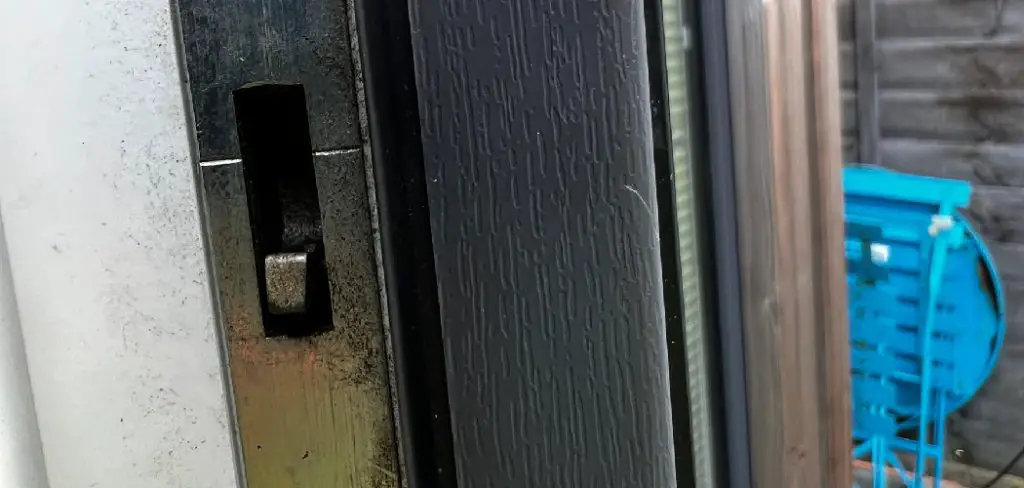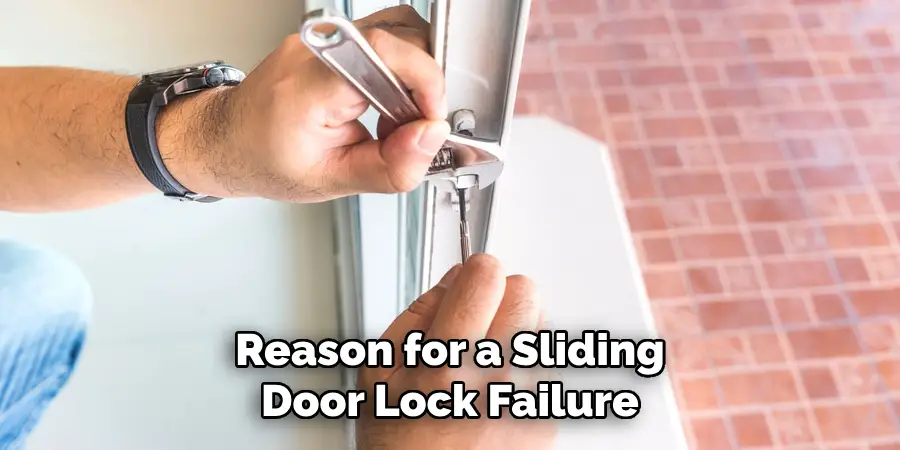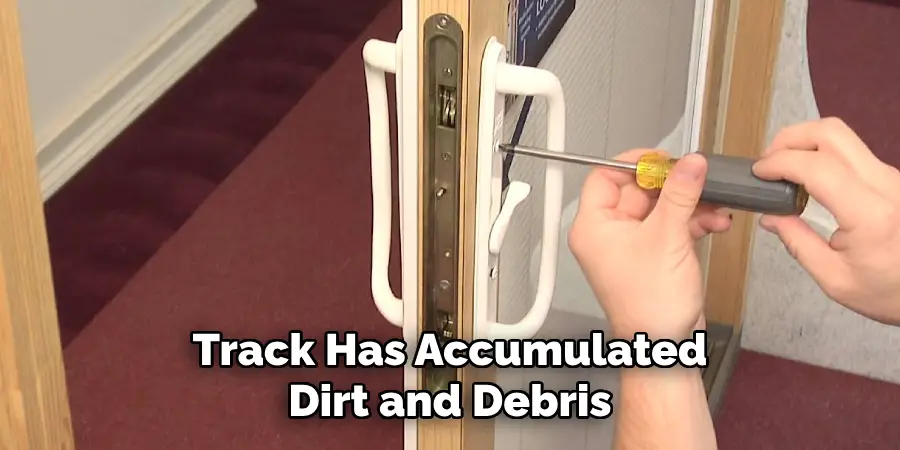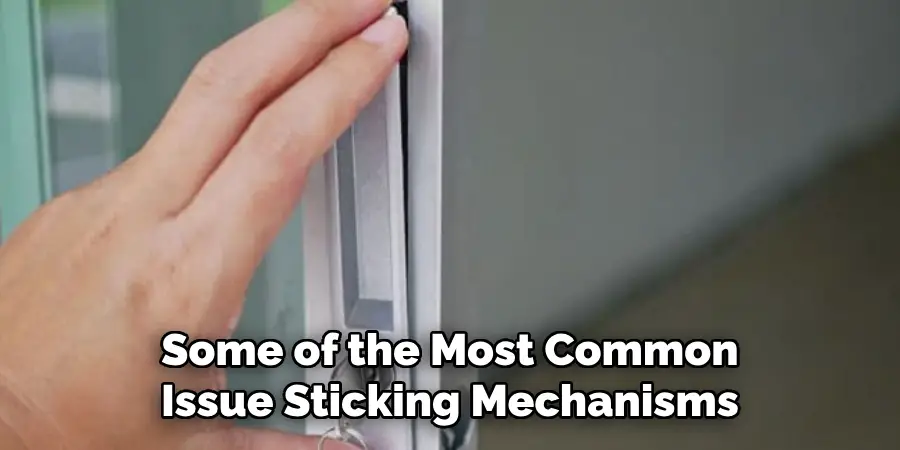Have you ever experienced a break-in or attempted break-in at home due to a broken sliding door lock? You might have spent time and money on new locks, only to find out that the real problem is your old and rusty sliding door lock mechanism.
While it can be easy enough to replace the hardware, fixing the locking mechanism requires some finesse and an understanding of how this complex system works.
When you have a sliding door, it provides an easy way to access your home. However, if the lock mechanism isn’t working properly, then this could be incredibly concerning and put the safety of your home at risk.

If you think that you’re having problems with your sliding door lock mechanism, don’t panic – you can take steps to identify and fix it yourself! In this blog post we’ll provide you with guidance on how to fix sliding door lock mechanism so that your sliding door stays safe for years to come.
What Causes Sliding Door Lock?
1. Worn-out or Broken Part of the Locking Mechanism
One of the most common causes of a sliding door lock failure is the malfunctioning or wearing out of some part in the locking mechanism. This could be due to wear and tear over time, or because it was not properly installed in the first place. In either case, these parts can often be replaced without having to replace the entire locking mechanism.
2. Sliding Door Misaligned
Another common reason for a sliding door lock failure is when the door itself has become misaligned. This can be due to poor installation, or from physical force being applied against the door in an attempt to open it without unlocking the mechanism. If this is the case, you may need to adjust or realign the sliding door before attempting to re-engage the locking mechanism.

3. Jammed Lock
Sometimes the lock mechanism can become jammed due to dirt or debris accumulating inside the locking mechanism, preventing it from properly engaging and unlocking. If this is the case, you may need to carefully disassemble the sliding door lock and clean out any obstructions before re-engaging it. Alternatively, you can lubricate the mechanism with a light machine oil to prevent further jamming.
4. Damaged Lock
If the locking mechanism has been damaged in some way, it may need to be repaired or replaced entirely. If you are unable to repair the damage yourself, you should contact an experienced locksmith for assistance. They will be able to assess the damage and advise you on what needs to be done to get your sliding door lock working again.
5. Faulty Spring
Lastly, the spring that keeps the locking mechanism in place can sometimes become faulty or broken, preventing it from properly engaging and unlocking. If this is the case, you may need to replace the spring entirely. This should be done by an experienced locksmith as they will have access to the necessary tools and replacement parts.
Once you have identified the cause of your sliding door lock failure, you can take the appropriate steps to repair or replace it as needed. This will ensure that your sliding door remains secure and functioning properly for years to come.
10 Tips on How to Fix Sliding Door Lock Mechanism
1. Check the Track of Your Sliding Door for Any Debris
One of the most common causes of a sliding door lock malfunctioning is when the track has accumulated dirt and debris. Check for any obstruction on the track that might be causing it to get stuck. If you find any, use a soft bristled brush or vacuum cleaner to clean it out.

2. Lubricate Your Sliding Door Lock
Over time, locks can become corroded, dry, and rusty. To get it working again, lubricate your sliding door lock with WD-40 or a similar type of lubricant.
3. Check for Broken Components
Inspect the lock mechanism for any visible signs of damage, such as broken parts or bent pieces that could be blocking its motion. If you find any, replace them immediately to ensure that the lock works properly.
4. Make Sure the Lock is Properly Aligned
Ensure that the sliding door lock is in the correct alignment and not misaligned or crooked. This could be causing it to stick and not function properly. Adjusting its position may help resolve this issue.
5. Inspect the Lock Spring
Sometimes, the spring inside the lock may become loose or worn out, causing it to malfunction. Check if this is the case and replace it with a new one if necessary. Also make sure that the spring is properly installed and adjusted.
6. Check for Loose Screws
If you have screws inside your sliding door lock, make sure they are not loose or missing. Tighten any loose screws and replace any missing ones to ensure that all components are securely attached.
7. Inspect the Strike Plate
The strike plate located in the door frame can become worn over time and may be the cause of your lock malfunctioning. Inspect it to make sure it is not warped or damaged, and replace it if necessary.
8. Adjust the Lock Height
If the sliding door’s lock mechanism appears too low or too high, adjust its height accordingly using a screwdriver or wrench. Make sure that it is in the correct position and not obstructing the door’s movement.
9. Repair or Replace Damaged Parts
If any parts of your sliding door lock are damaged or worn out, consider replacing them with new ones if necessary. This should help resolve any issues you may be having with it. Make sure to use genuine spare parts for the best results.
10. Contact a Professional
If all else fails, it is a good idea to contact a professional who can properly diagnose and fix your lock mechanism. They will be able to identify any underlying issues and repair them accordingly. It may cost you some money but it is worth it in the long run if your sliding door lock is not working correctly.

These are the tips you should consider when trying to fix your sliding door lock mechanism. Taking the time to inspect each component and address any issue promptly will ensure that your lock continues to work properly for a long time. Proper maintenance and care can also help in preventing malfunctions from occurring in the first place.
Frequently Asked Questions
What Precautions Should Be Taken Before Working on a Sliding Door Lock?
When working on a sliding door lock, safety is key. Ensure that no one will be accidentally walking into your work area and always disconnect the power from any connected electrical components before starting repairs. Additionally, always use protective gloves when handling sharp tools or metal parts to avoid cuts and scrapes.
What Is a Sliding Door Lock Mechanism?
A sliding door lock mechanism is the part of the door that locks and unlocks it. It typically consists of a cylinder slider, which slides up and down along a metal groove to control the lock position. The cylinder can be unlocked by turning it with a key or by using an electronic access device such as an RFID card.
How Do You Fix a Sliding Door Lock Mechanism?
Depending on the type of sliding door lock, different methods may be required to fix it. If the cylinder slider is broken or stuck, it may need to be replaced. In some cases, a lubricant can help to free up a stuck mechanism. If the problem is with the electronic access device, it may need to be reset or replaced. In all cases, it is best to contact a professional locksmith for assistance with fixing the sliding door lock mechanism.
What Are Some Common Issues With Sliding Door Locks?
Some of the most common issues with sliding door locks include sticking mechanisms, broken mechanisms, electronic access device failure, and worn-out keys. If any of these issues occur, it is best to contact a professional locksmith for assistance. They will be able to diagnose and repair the problem quickly and safely.

Conclusion
When it comes to repairing a sliding door lock mechanism, there are many possible solutions you can try. Regardless of which approach you decide to go with, be sure to pay attention and take your time so that the job is done right.
With the right tools, some basic home renovation knowledge, and a bit of patience, fixing a sliding door lock mechanism is entirely achievable. It may help to enlist an experienced hand to give you advice or assistance where necessary too!
As always, safety should remain your top priority throughout the entire process – don’t forget that. The best results will also come from high-quality parts and components – remember this when shopping around for the necessary supplies.
Hopefully this guide on how to fix sliding door lock mechanism has helped you navigate the key steps in restoring a malfunctioning sliding door lock mechanism so you can get it securely working again!
